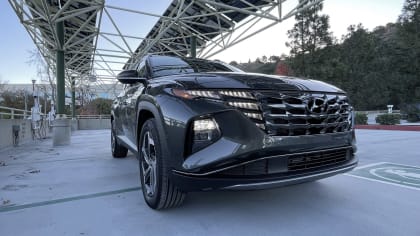NZ's EV Shift

How the End of the Clean Car Discount is Changing Car Buyers' Habits
For a long time, the main question in New Zealand's vehicle industry was simple: how can we get more Kiwis into cleaner cars? The Clean Car Discount (CCD), which the government came up with in 2021, created a "feebate" system that gave low-emission cars a refund and charged high-emission cars a fee.
By The Editors
Wed, Oct 29, 2025 02:17 PM PST
Featured image by AI.
This plan worked well to get more people to buy electric vehicles (EVs) and hybrids, which led to a big decline in the average CO2 emissions of new cars. But, like all big changes in the market, its story was always going to be one of highs and lows. At the end of 2023, the plan was formally canceled, which caused a big and abrupt change. The question today is not what the government is pushing, but what New Zealand automobile customers will choose for themselves.
The Initial Shockwave on EV Uptake
It was expected that the end of the CCD will lead to a reduction in registrations for electric vehicles (EVs) and plug-in hybrid electric vehicles (PHEVs). Data shows that sales of low-emission vehicles shot up shortly before the deadline and then fell sharply in the months that followed. The rapid loss of thousands of dollars in subsidies was a big mental and financial barrier for people who wanted to acquire the product. For a lot of people, the refund was what made the price difference between a regular Internal Combustion Engine (ICE) vehicle and an electric vehicle (EV) less of a problem.
The number of EV registrations has not gone back to what it was before the CCD, although the first drop was big. This market correction shows how much the transition depended on the direct financial incentive. But that doesn't mean the EV revolution has halted; it just means that instead of being pushed by subsidies, it is now something that consumers think about in terms of value.
The Ute and SUV Comeback
On the other hand, the market for huge, high-emission cars, including utes and big SUVs, has come back. Before, these cars and trucks had to pay a "ute tax," which added thousands to the price of the car or truck. The expenses of the commercial and farming industries, who commonly need utes, went down overnight when the penalty was taken away.
Sales of high-emission cars, which make up most of the top-selling new cars in New Zealand, have gone up again. This movement shows that utility and cost are the most important factors for a large number of buyers. The termination of the "ute tax" part of the CCD made these cars instantly cheaper, which led to a return to familiar and traditionally popular segments.
Consumer Focus: Value over Rebate
Car buyers' main goal has changed from getting government money to carefully judging a car's true worth. People today are less interested in the initial discount and more interested in a full commercial study of the total cost of ownership (TCO). This includes putting long-term savings first by lowering fuel and maintenance costs, adding better safety features, and using cutting-edge technology on board. Affordable electric vehicle (EV) models, especially those from newer firms, are currently doing well because of their low sticker price and low running costs, not because of government subsidies.
This quest for the best value is true for all consumers. The goal of buying is always the same: to receive the greatest possible experience within your budget. This could be getting the cheapest mortgage rates, looking for deals on the latest technology, or picking an entertainment platform. For fun, this involves looking at other streaming services or digital games. This tendency is shown by the rise in popularity of platforms like live casinos in New Zealand, which let you play casino games from home. People want the best experience that gives them the most value and ease of use.
The Enduring Clean Car Standard
The Clean Car Standard (CCS) is the other half of New Zealand's strategy. This "behind-the-scenes" action is aimed at people who import cars, not people who buy them. The CCS sets yearly CO2 emission goals for all of an importer's vehicles. If these limitations are broken, there are fines. This gives the car industry a structural reason to find and sell more low-emission vehicles. The CCS keeps putting pressure on the market in New Zealand, even though consumer subsidies are no longer available. This means that the supply of vehicles will slowly but surely move toward cleaner options.






